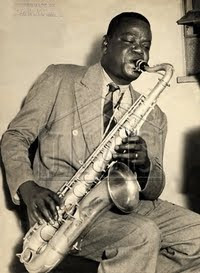Hamilton De Holanda

It is suggested that there are more similitaries then differences between choro music and jazz music. I don't know if this true, but I learned that the history of the development of both music styles have a lot in common. Yesterday I saw some fragments of films of Hamliton De Holanda, a bandolim player that feels at home in both jazz and choro music.
 Born in 1975 he plays the Portuguese guitar, the so-called bandolim, made famous by musicians like Jacob Do Bandolim. He added an extra ( double) string to his instrument which makes it possible to develop a more polyphonic playing technique. The sound of this 10 string bandolim ( all strings double on this instrument) is powerful and precise. Although I never have heard an album of him I became fascinated by the way he plays his instrument due to some film fragments of performances.
Born in 1975 he plays the Portuguese guitar, the so-called bandolim, made famous by musicians like Jacob Do Bandolim. He added an extra ( double) string to his instrument which makes it possible to develop a more polyphonic playing technique. The sound of this 10 string bandolim ( all strings double on this instrument) is powerful and precise. Although I never have heard an album of him I became fascinated by the way he plays his instrument due to some film fragments of performances. Hamilton De Holanda is one of those raising stars in Brazil we should keep an eye on. He feels comfortable, not only in choro or jazz music, but also in a classical orchestra, with famous artists like the Buena Vista Social Club or with jazz musicans like Stanley Jordan. He will, I'm sure about that, develop to a global artist, and will get known beyond the borders of Brazil. He has been in Europe, most of the time in France, and I found a fragment from a TV program where he shows his extended instrument at a festival in Corsica. .
Hamilton De Holanda is one of those raising stars in Brazil we should keep an eye on. He feels comfortable, not only in choro or jazz music, but also in a classical orchestra, with famous artists like the Buena Vista Social Club or with jazz musicans like Stanley Jordan. He will, I'm sure about that, develop to a global artist, and will get known beyond the borders of Brazil. He has been in Europe, most of the time in France, and I found a fragment from a TV program where he shows his extended instrument at a festival in Corsica. .This summer he will play at the North Sea Jazz Festival in Rotterdam, I learned, with his Brasilianos Quintet and in October he is sceduled in The Netherlands again: in the Oosterpoort in Groningen, in the Zuiderpershuis in Antwerp (Belgium), in the Doelen in Rotterdam and the Tropenmuseum in Amsterdam. You can find the exact dates bij clicking on his website.
I love to share with you some fragments, where he tells about his instrument, with his Brasilianos Quintet and alone on stage in Brasilia ( Brazil). I hope you'll become as fascinated by this young rising star as me, that builds bridges between choro and jazz music.
I hope to find his CDs very soon !!
Hamilton de Holanda Quintet live performance "Caçua" of the CD "Brasilianos" - Biscoito Fino-Discmedi 2006
Hamilton de Holanda Solo live performance "Disparada" from the live solo CD "01 Byte 10 Cordas" - Biscoito Fino-Discmedi 2006
This contribution has also been posted (in Dutch and English) at the Keep Swinging web log.
Keep swinging
Hans Koert
keepswinging@live.nl









.jpg)







